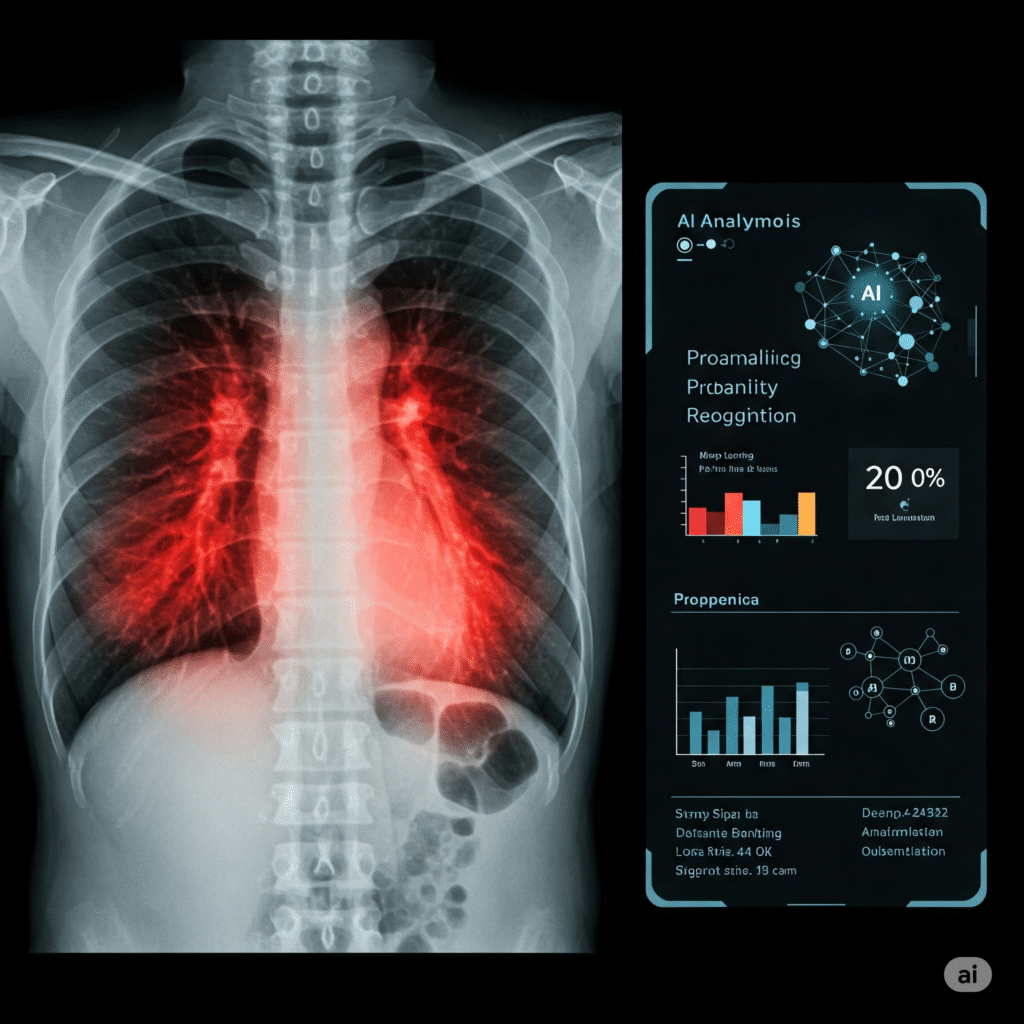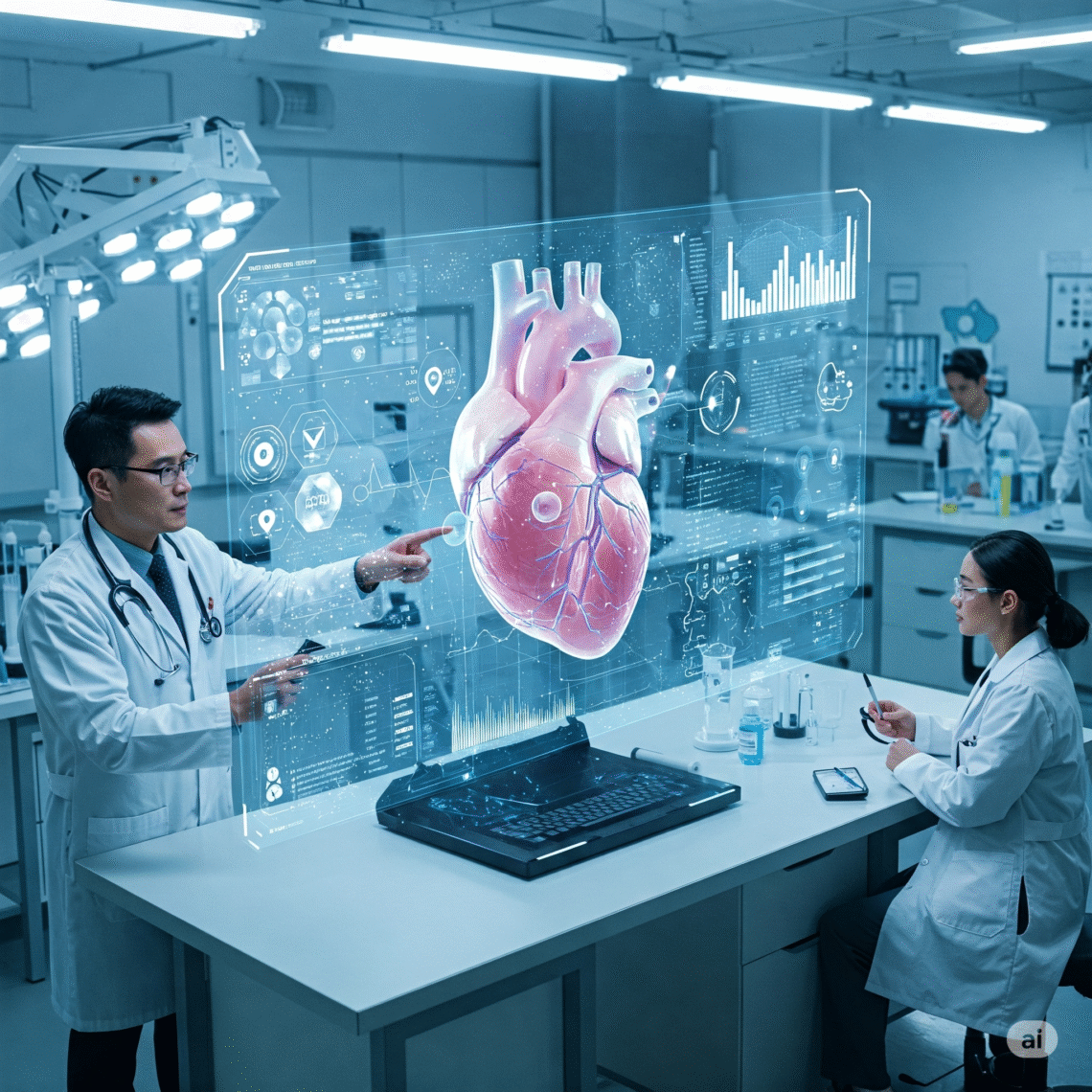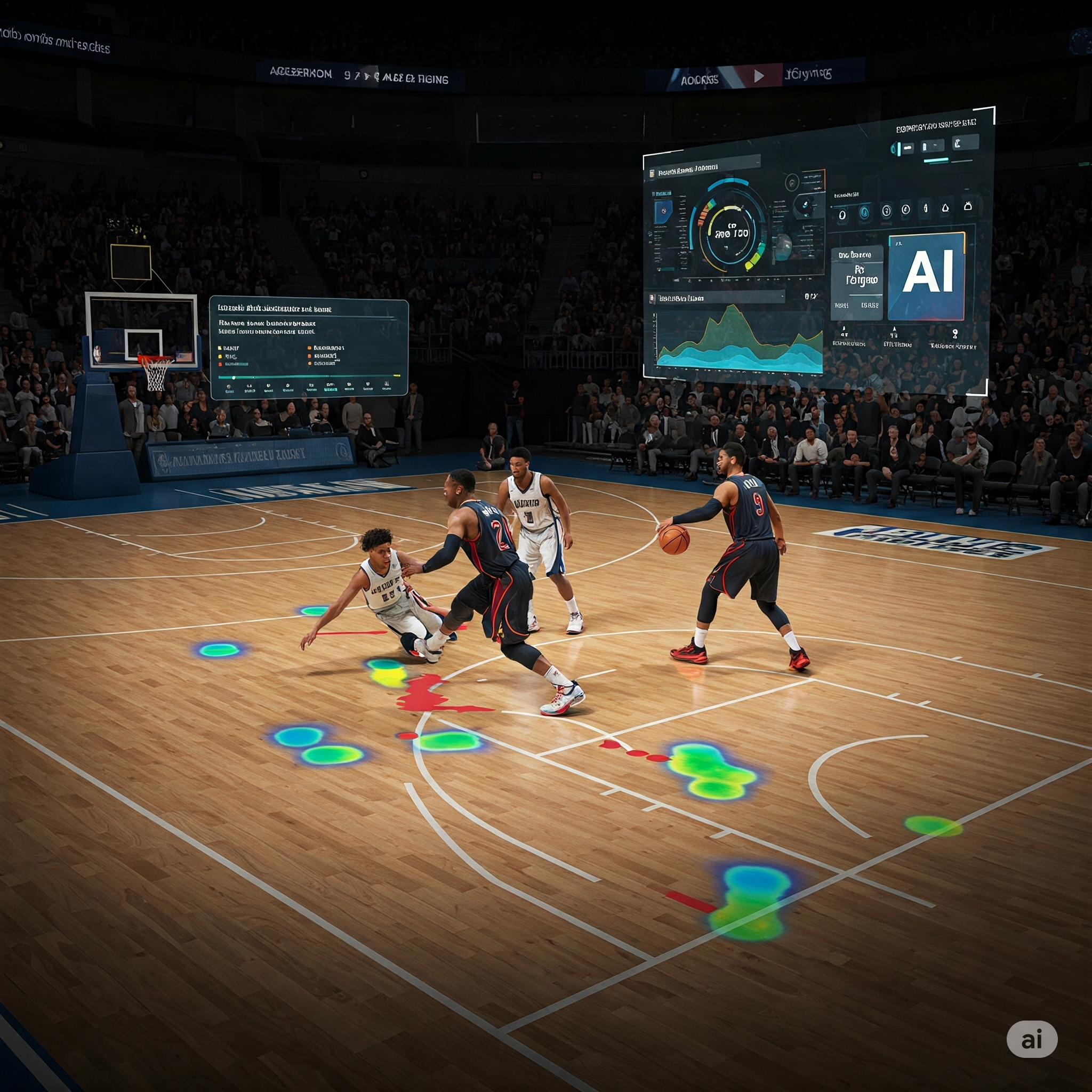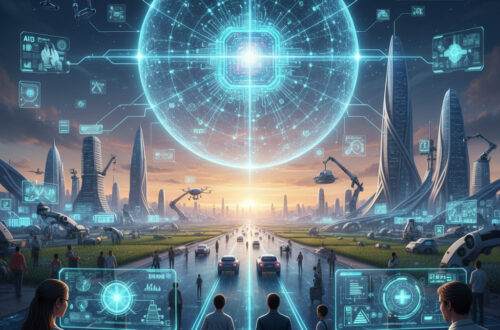Artificial Intelligence (AI), at its simplest, is the ability of computer systems to perform tasks that typically require human intelligence, such as learning, problem-solving, and decision-making. This transformative technology is rapidly making its presence felt across numerous industries, and healthcare, particularly in the realm of diagnosis, stands at the cusp of a profound revolution. AI is not poised to replace the compassionate touch and nuanced judgment of doctors but rather to act as a powerful ally, significantly enhancing medical capabilities and ushering in an era of faster, more accurate, and potentially more cost-effective healthcare solutions.
Why Medical Diagnosis Needs AI
The increasing demands on global healthcare systems, coupled with existing limitations, underscore the critical need for innovative solutions like AI in medical diagnosis:
- Increasing Global Demand for Healthcare: An aging global population and rising prevalence of chronic diseases are placing unprecedented strain on healthcare resources worldwide. AI can help manage this demand by streamlining diagnostic processes and improving efficiency.
- Shortage of Qualified Doctors: Many regions, particularly rural and underserved areas, face a significant shortage of qualified medical professionals, including specialists crucial for accurate diagnoses. AI-powered diagnostic tools can bridge this gap by providing expert-level assistance even in the absence of on-site specialists.
- Complex, Data-Heavy Diagnoses: Modern medicine generates vast amounts of complex data, including medical imaging (X-rays, CT scans, MRIs), genomic information, and pathology slides. Analyzing this data thoroughly and quickly can be challenging for human clinicians, increasing the risk of oversight or delayed diagnosis. AI excels at processing and identifying patterns within these large datasets.
- Rising Cost of Traditional Healthcare: The escalating costs of healthcare are a major concern globally. AI has the potential to drive down costs by automating routine diagnostic tasks, reducing the need for expensive and time-consuming manual analyses, and enabling earlier, less invasive interventions.
How AI Works in Medical Diagnosis
AI’s role in medical diagnosis can be broken down into a series of key steps, leveraging the power of machine learning and data analysis:
- Data Collection: AI algorithms are trained on massive datasets comprising diverse medical information, including patient history, symptoms, laboratory test results, medical images, genomic sequences, and electronic health records. The quality and diversity of this data are crucial for the AI’s accuracy and reliability.
- Machine Learning: At the heart of AI in diagnosis lies machine learning (ML), a subset of AI that allows computer systems to learn from data without being explicitly programmed. Various ML algorithms are employed, enabling AI to identify complex relationships and patterns within the medical data.
- Pattern Recognition: Once trained, AI models can analyze new patient data to detect subtle patterns, anomalies, or indicators of disease that might be difficult for the human eye to discern. This could involve identifying minute irregularities in medical images, recognizing specific combinations of symptoms indicative of a particular condition, or flagging unusual patterns in lab results.
- Decision Support: Based on the identified patterns and learned associations, AI can provide decision support to clinicians. This can range from suggesting possible diagnoses and differential diagnoses to flagging potential areas of concern that require further investigation. AI acts as an intelligent assistant, providing valuable insights to aid the diagnostic process.
Example: Consider an AI system trained on millions of chest X-rays, some labeled as showing pneumonia and others as healthy. Through deep learning, the AI learns to identify the specific visual features associated with pneumonia. When presented with a new X-ray, the AI can analyze the image, recognize these learned patterns, and provide a probability score indicating the likelihood of pneumonia, often achieving accuracy comparable to or even exceeding that of experienced radiologists.

Major Technologies Used
Several key AI technologies are driving advancements in medical diagnosis:
- Machine Learning (ML): As mentioned earlier, ML algorithms are fundamental for pattern detection, prediction of disease risk, and classification of medical data. Techniques like logistic regression, support vector machines, and random forests are widely used.
- Deep Learning (DL): A subfield of ML that utilizes artificial neural networks with multiple layers to analyze complex data like medical images (CT scans, MRIs, retinal scans) and genomic sequences. DL excels at automatically extracting intricate features from raw data, leading to highly accurate diagnostic models.
- Natural Language Processing (NLP): NLP enables AI to understand and extract meaningful information from unstructured text data such as patient notes, medical records, and research papers. This can help identify key symptoms, treatment histories, and potential drug interactions, enriching the diagnostic process.
- Robotic Process Automation (RPA): RPA involves using software robots to automate repetitive and rule-based tasks within the diagnostic workflow, such as processing lab orders, extracting data from different systems, and generating preliminary reports, freeing up human professionals for more complex tasks.
- Wearable AI: The proliferation of smartwatches and health bands equipped with sensors allows for continuous, real-time collection of physiological data (heart rate, sleep patterns, activity levels). AI algorithms can analyze this data to provide early warnings of potential health issues or monitor the progression of existing conditions.
Real-World Applications
AI is already demonstrating its transformative potential across various medical specialties:
a) Medical Imaging: AI in radiology is revolutionizing the detection of various conditions:
- Cancer Detection: AI algorithms can analyze mammograms for breast cancer, CT scans for lung nodules, and MRI scans for brain tumors with impressive accuracy, often highlighting subtle anomalies that might be missed by the human eye. Tools like Google DeepMind’s work on breast cancer screening, Aidoc’s AI solutions for radiology, and Zebra Medical Vision’s AI for detecting various medical conditions in imaging are leading the way.
- Bone Fractures: AI can rapidly analyze X-rays to identify fractures, aiding in faster diagnosis and treatment, particularly in emergency settings.
b) Pathology & Lab Tests: AI is enhancing the efficiency and accuracy of laboratory analysis:
- Tissue Sample Classification: AI models can analyze digital pathology slides to classify tissue samples for cancer diagnosis and other diseases, potentially reducing turnaround times and improving diagnostic consistency.
- Blood Work Analysis: AI can identify patterns in blood test results that may indicate underlying conditions, aiding in the early detection of diseases.
c) Cardiology: AI is playing a crucial role in the diagnosis and management of heart conditions:
- Arrhythmia Detection: AI-powered algorithms can analyze electrocardiograms (ECGs) to detect irregular heart rhythms (arrhythmias) with high accuracy, enabling timely intervention to prevent serious cardiac events.
- Heart Disease Risk Prediction: AI can analyze patient data, including medical history and lifestyle factors, to predict an individual’s risk of developing heart disease, allowing for early preventative measures.
d) Ophthalmology: AI is making significant strides in diagnosing eye diseases:
- Diabetic Retinopathy and Glaucoma: AI tools like IDx-DR have received regulatory approval for autonomously diagnosing diabetic retinopathy from retinal images, increasing access to screening, especially in underserved areas. AI is also being used to detect glaucoma by analyzing optical coherence tomography (OCT) scans.
e) Dermatology: AI-powered mobile applications are empowering individuals to monitor skin lesions:
- Skin Lesion Detection: Apps like SkinVision use AI algorithms to analyze images of skin moles taken with a smartphone camera to assess their risk of being cancerous, encouraging users to seek professional medical advice when necessary.
f) Genomics & Precision Medicine: AI is crucial for interpreting the vast amounts of data generated by genomic sequencing:
- Disease Risk and Treatment: AI algorithms can analyze an individual’s DNA to identify genetic predispositions to certain diseases and predict their response to specific treatments, paving the way for personalized medicine.
g) COVID-19 Response: During the pandemic, AI played a vital role in:
- Early Detection: AI algorithms analyzed medical images (chest X-rays and CT scans) to aid in the early detection of COVID-19.
- Outbreak Prediction: AI models were used to predict the spread and intensity of outbreaks, informing public health strategies.
- Diagnostic Support: AI-powered chatbots and platforms provided diagnostic support and information to patients and healthcare providers.
Benefits of AI in Diagnosis
The integration of AI into medical diagnosis offers numerous compelling advantages:
- Speed: AI can analyze scans and test results almost instantaneously, significantly reducing the time it takes to reach a diagnosis, which can be critical in acute conditions.
- Accuracy: AI algorithms, when trained on high-quality data, can often detect subtle patterns and anomalies with greater accuracy and consistency than humans, potentially reducing diagnostic errors, especially in complex cases.
- Cost-efficiency: Over time, AI can lead to cost savings for both patients and healthcare systems by automating tasks, reducing the need for repeated tests, and enabling earlier, less expensive interventions.
- Accessibility: AI-powered diagnostic tools can be deployed in remote or underserved areas where access to specialist physicians is limited, democratizing access to quality healthcare.
- Decision Support: By providing clinicians with AI-driven insights and potential diagnoses, AI empowers them to make more informed and confident decisions about patient care.
Challenges & Ethical Concerns
Despite its immense potential, the widespread adoption of AI in medical diagnosis faces several challenges and raises critical ethical concerns:
- Bias in AI Models: AI algorithms are only as unbiased as the data they are trained on. If the training data disproportionately represents certain demographics or neglects others, the AI may exhibit bias, leading to inaccurate or unfair diagnoses for underrepresented groups.
- Transparency & Explainability: Many advanced AI models, particularly deep learning networks, operate as “black boxes,” making it difficult to understand the reasoning behind their diagnoses. This lack of transparency can hinder trust and make it challenging for clinicians to validate AI’s conclusions.
- Data Privacy: Handling sensitive patient health data requires stringent security measures and adherence to privacy regulations like HIPAA and GDPR. Ensuring the confidentiality and security of this data is paramount.
- Over-reliance on Machines: While AI provides valuable support, it’s crucial to avoid over-reliance on machines. Human oversight, clinical judgment, and the crucial element of patient-doctor interaction remain essential for comprehensive and empathetic care.
- Regulatory Approval: Before widespread clinical use, AI-powered diagnostic tools must navigate complex regulatory approval processes, demonstrating safety, efficacy, and adherence to ethical standards. Legal and ethical hurdles need to be addressed to facilitate responsible mass deployment.
Future Outlook
The future of AI in medical diagnosis is poised for even greater integration and sophistication:
- Integration of AI with Electronic Health Records (EHRs): Seamless integration of AI tools with EHR systems will provide clinicians with a comprehensive and AI-enhanced view of patient data, facilitating more holistic and informed diagnoses.
- Personalized AI Healthcare Assistants: AI could power personalized virtual assistants that monitor individual health data, provide early warnings of potential issues, and guide patients through diagnostic and treatment pathways.
- AI in Early Cancer Detection: Future AI applications may involve analyzing breath samples, blood tests, or even wearable sensor data for subtle biomarkers indicative of early-stage cancers, leading to earlier and more effective treatment.
- AI-Assisted Surgeries and Robotic Diagnostics: AI will continue to enhance surgical precision through robotic systems and could play a role in guiding robotic diagnostic procedures with greater accuracy.
Quote: As renowned venture capitalist Vinod Khosla aptly stated, “AI won’t replace doctors. But doctors who use AI will replace those who don’t.” This highlights the symbiotic relationship between AI and human clinicians in the future of healthcare.
Conclusion
Artificial Intelligence is undeniably revolutionizing medical diagnosis, offering the potential for faster, more accurate, cost-effective, and accessible healthcare solutions. From analyzing complex medical images to interpreting genomic data and providing real-time insights from wearable devices, AI is augmenting the capabilities of healthcare professionals and improving patient outcomes. However, the integration of AI must be approached with a balanced perspective, acknowledging the ethical considerations, ensuring data privacy, and maintaining crucial human oversight. By fostering responsible innovation, establishing robust regulations, and promoting ongoing research, we can harness the transformative power of AI to create a healthier future for all.





